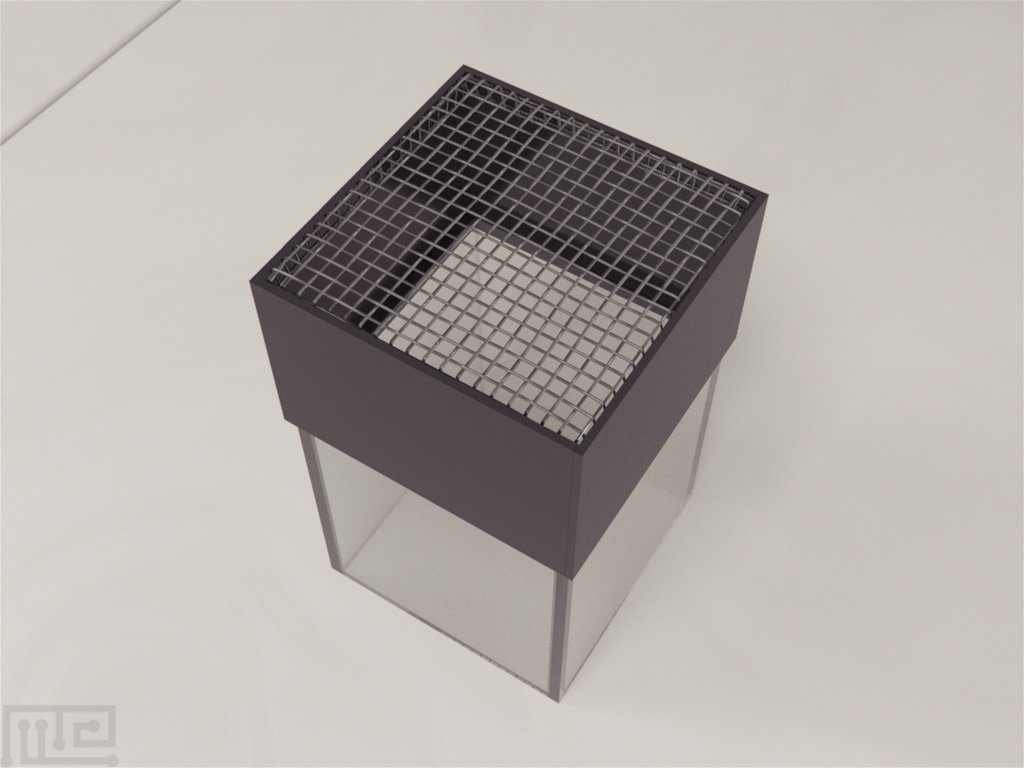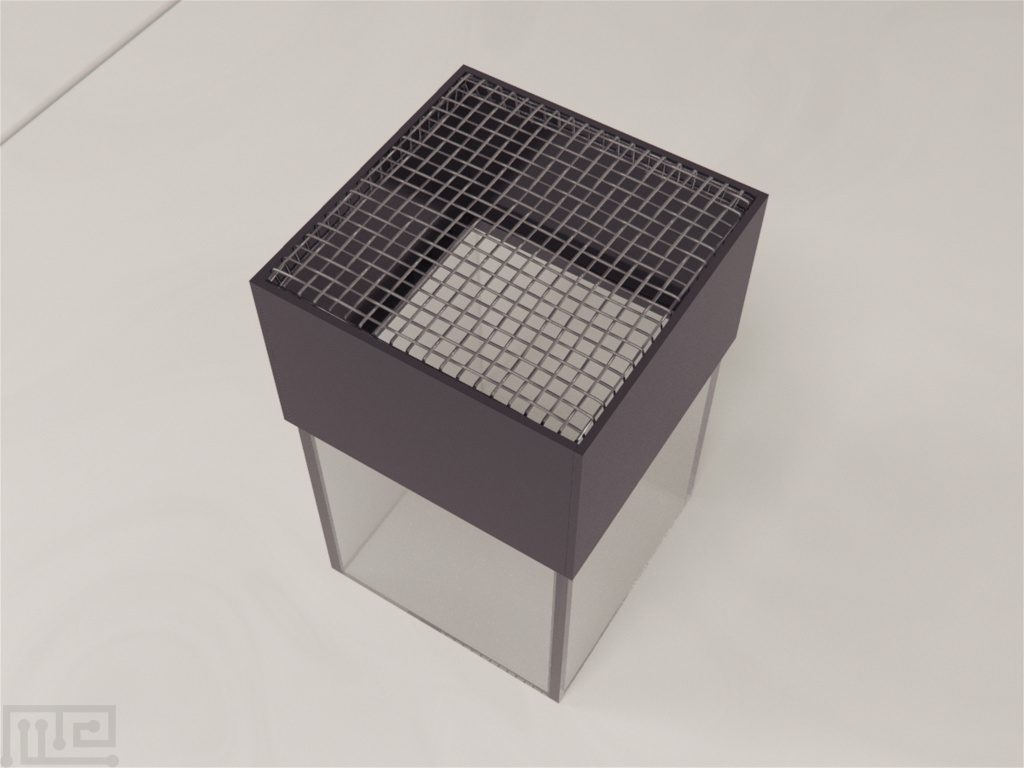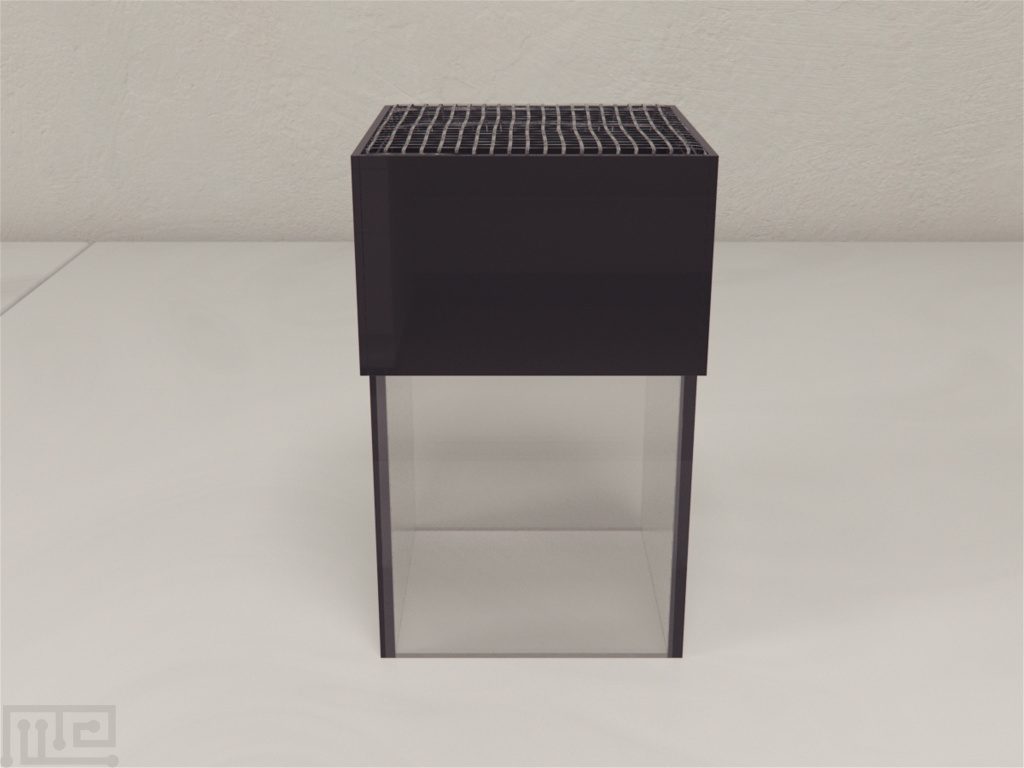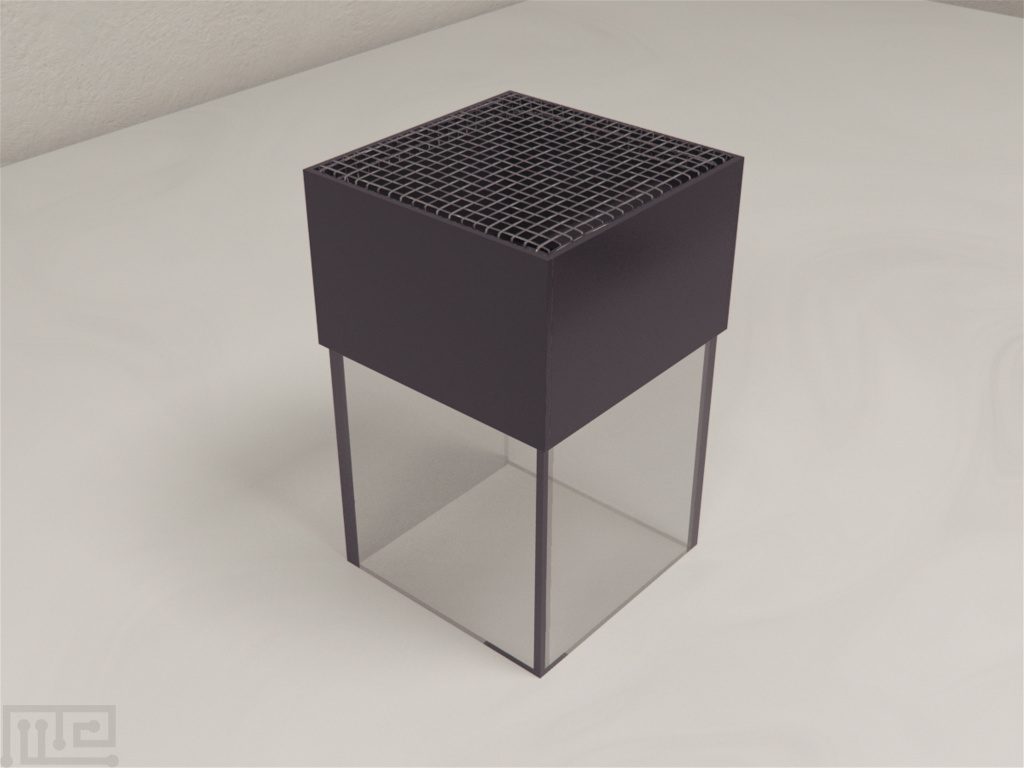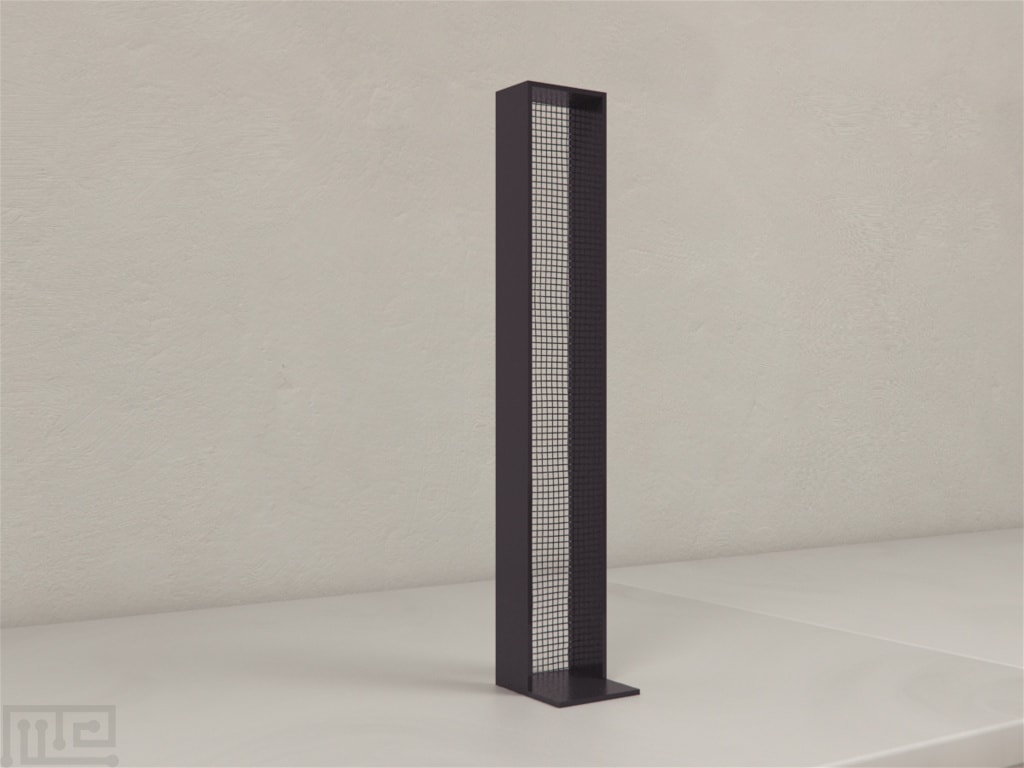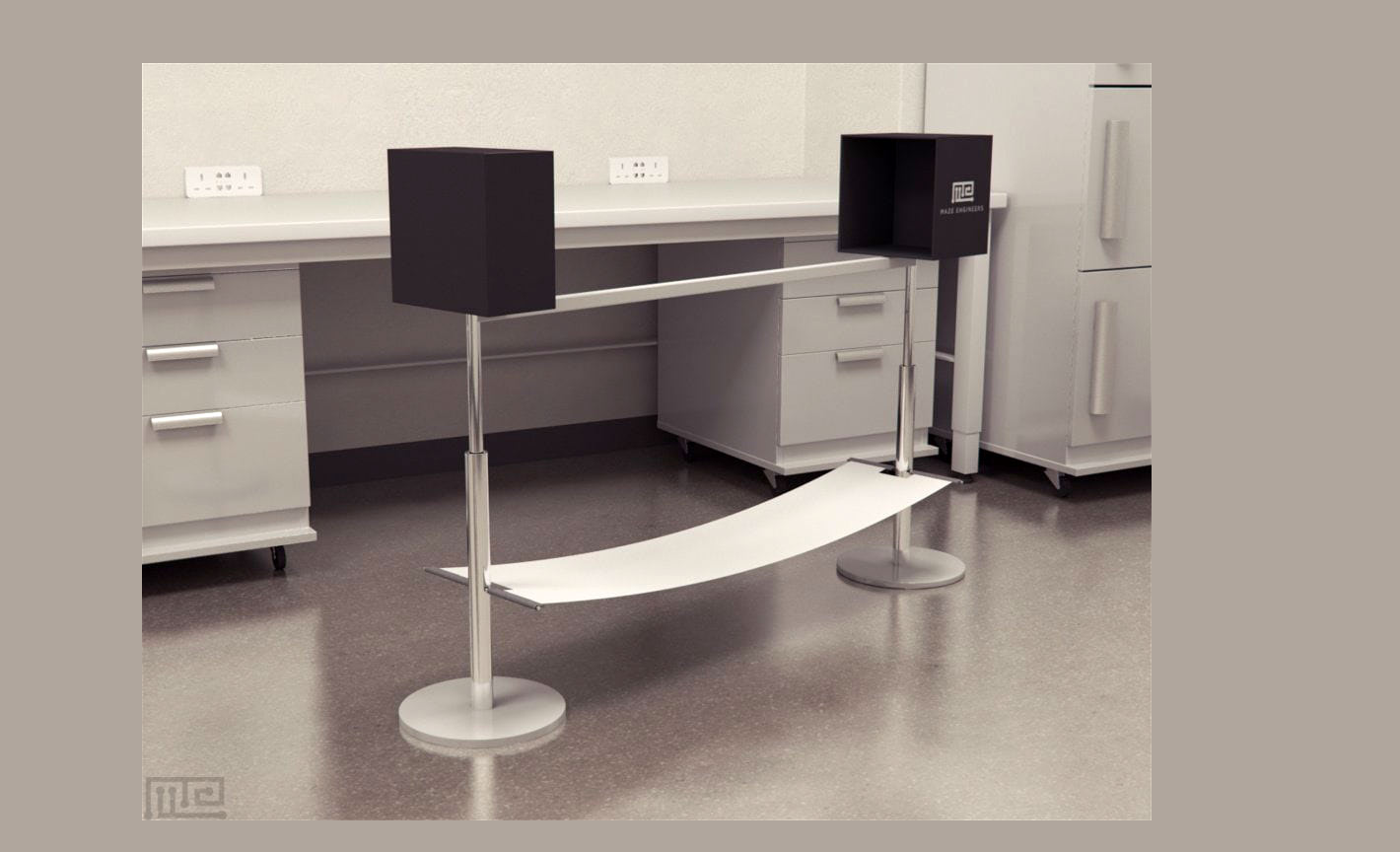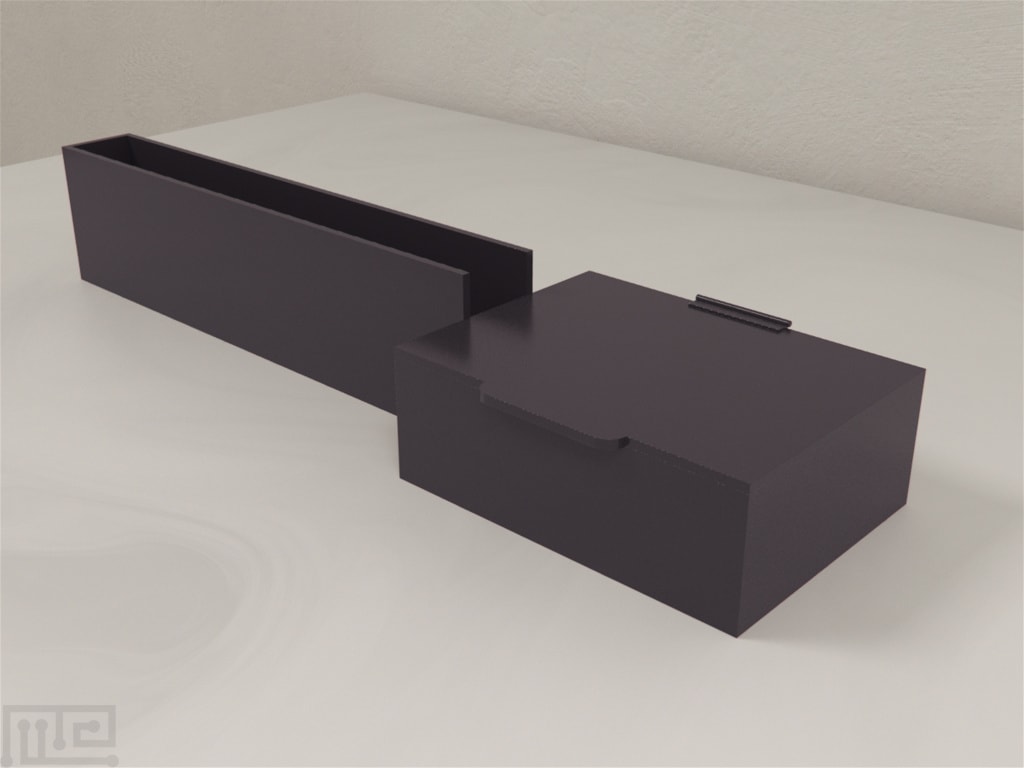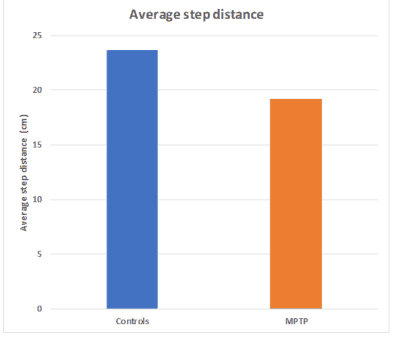The horizontal grid apparatus is a vertically positioned grid box mounted with plexiglass, which allows the mouse to grab on the grids as it climbs down. The MazeEngineers modification of the previously published apparatuses (Tillerson et al., 2002; Tillerson and Miller, 2003; Kim et al., 2010). For experiments, the apparatus was first placed on the floor with the grid side on the bottom, and a mouse was lifted by its tail and placed inside the box. Once the mouse has stably grabbed onto the grids with all four paws, the apparatus is inverted so that the mouse hangs from the grid.
Available for mice and rats. Multiple colors available.
Price & Dimensions
Mouse
$ 590
Per Month- Square grid box 12 cm × 12 cm (L x W)
- Wire mesh openings 0.8 cm × 0.8 cm (L x W)
- Height: 20 cm mount
- Upper 8 cm of mount: Black Acrylic
- Bottom 12 cm of mount: Transparent Acrylic
Rat
$ 690
Per Month- Square grid box 18 cm × 18 cm (L x W)
- Wire mesh openings 1 cm × 1 cm (L x W)
- Height: 30 cm mount
- Upper 12 cm of mount: Black Acrylic
- Bottom 18 cm of mount: Transparent Acrylic
Documentation
Introduction
The Horizontal Grid test is used in the evaluation of neuromuscular strength and coordination in rodents. Along with other tests such as the Vertical Grid test and Gait test, the Horizontal Grid test is used in many investigations associated with neuromuscular diseases to understand and demonstrate the motor impairments, and in evaluating the effects of pharmacological compounds. The test is similar to the one developed by Kondziela in 1964, wherein mice are placed on a wire mesh that is later inverted to assess muscle strength using all four limbs. The compact design of the horizontal grid offers optimal stability, unlike Horizontal Ladder test. The start and goal box that supports the ladder rung does not provide maximum balance to the assembly of the horizontal ladder. Therefore, the Horizontal Grid test can make a good alternative to the widely used Horizontal Ladder test.
Animal models of diseases such as Parkinson’s disease and Huntington’s disease allow deeper assessments of the disease-related motor dysfunctions. Since the muscles work in tandem with other systems in the body, the animal models play a crucial role in evaluating the condition and the effects of treatments.
Apparatus and Equipment
The Horizontal Grid apparatus is constructed using a wire mesh and plexiglass supports. The grid box measures 12 x 12 cm and holds a wire mesh having 0.8 x 0.8 cm openings. As a modification to the earlier version (Tillerson et al., 2002; Tillerson and Miller, 2003) of the apparatus, the support rods are replaced with plexiglass walls of height 20 cm. The upper 8 cm of the plexiglass is colored black while the remaining is transparent. The modification by Kim et al., 2010 reduces the complexity associated with the scoring of motor dysfunctions by untrained investigators.
Training Protocol
The Horizontal Grid apparatus is cleaned before and after every experiment. The apparatus is well-lit. Automated tracking and recording software such as Noldus Ethovision XT or ANY-Maze can be used to assist with the scoring.
The task requires no pre-training. The general procedure involves placing the grid side of the apparatus on the floor. The rodent is then lifted by its tail and placed inside the plexiglass box. When the subject has securely gripped the mesh grid, the apparatus is inverted. The subject is observed for 30 seconds as it hangs from the grid. Trials are repeated as necessary.
Evaluation of effects of 1-methyl-4-phenyl1,2,3,6-tetrahydropyridine (MPTP)
The subjects are administered 20 mg/kg MPTP dissolved in saline intraperitoneally four times at 2-h intervals. After six days, the subjects are tested on the Horizontal Grid to assess motor deficits. (Kim et al., 2010)
Sample Data
The following data is collected during the Horizontal Grid test.
- The sum of forepaw step distance: Summation of the distance of each successful forepaw step taken. The length of each forepaw step is calculated as
Step distance (grids covered/step) = √ (width)2+(length)2
Which is then converted into centimeter units as follows
Step distance (cm/step) = √ (width)2+(length)2 * 0.8
- The total number of forepaw steps: The number of successful forepaw steps taken before the subject falls off the grid.
- Average forepaw step distance: Obtained by dividing the sum of forepaw step lengths by the number of forepaw steps taken.
- Hang time: The duration that the subject holds the horizontal grid. The maximum duration is 30 s.
Strengths & Limitations
Strengths
The Horizontal Grid test is ideal for the assessment of skilled forepaw use in relation to distal musculature and digit manipulation. The modification suggested by Kim et al., 2010 allows easy scoring of motor deficits even by untrained investigators. The modification enables the measurement of actual total and average step distance as opposed to the mean step distance obtained from the earlier version.
The compact design of the horizontal grid offers optimal stability, unlike Horizontal Ladder test. The start and goal box that supports the ladder rung does not provide maximum balance to the assembly of the horizontal ladder. Therefore, the Horizontal Grid test can make a good alternative to the widely used Horizontal Ladder test.
The Horizontal Grid test is beneficial in demonstrating muscular dysfunction and in evaluating drug effects. The test can also be extended to age-related neuromuscular decline and used in understanding nerve regeneration/damage.
Limitations
Repeated trials on the Horizontal Grid will cause muscle fatigue in the subjects. The subject’s performance is also dependent on its weight. Thus, it is important to have a large cohort of similar weights to obtain reliable results. It is important to allow rest periods between each trial. Factors such as the age and sex of the subject can also affect performance.
Summary and Key Points
- The Horizontal Grid test is similar to the apparatus developed by Kondziela in 1964.
- The Horizontal Grid test assists with the evaluation of neuromuscular strength and coordination in rodents.
- Kim et al., 2010 replaced the support rods aspect of the traditional Horizontal Grid apparatus with clear plexiglass to reduce motor dysfunction scoring complexity.
- The step distance is calculated as: Step distance (cm/step) = √ (width)2+(length)2 * 0.8
- The subject’s performance is also dependent on its weight.
- Considering the stability of the apparatus, the Horizontal Grid test is an alternative to the widely used Horizontal Ladder test.
References
Kim ST, Son HJ, Choi JH, Ji IJ, Hwang O (2010). Vertical grid test and modified horizontal grid test are sensitive methods for evaluating motor dysfunctions in the MPTP mouse model of Parkinson’s disease. Brain Res. 1306:176-83. doi: 10.1016/j.brainres.2009.09.103.
KONDZIELLA W (1964). [Article in German] [A NEW METHOD FOR THE MEASUREMENT OF MUSCLE RELAXATION IN WHITE MICE]. Arch Int Pharmacodyn Ther. 152:277-84.
Tillerson, J.L., Caudle, W.M., Reverson, M.E., Miller, G.W., (2002). Detection of behavioral impairments correlated to neurochemical deficits in mice treated with moderate doses of 1-methyl-4-phenyl-1,2,3,6-tetrahydropyridine. Exp. Neurol. 178, 80–90.
Tillerson, J.L., Miller, G.W., (2003). Grid performance test to measure behavioral impairment in the MPTP-treated mouse model of parkinsonism. J. Neurosci. Methods 123, 189–200.

